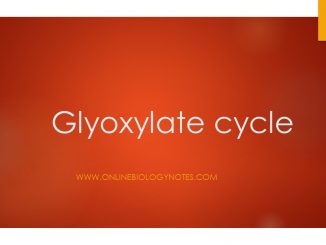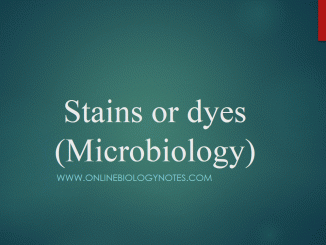
Glyoxylate cycle-steps and significance
Glyoxylate cycle-steps Glyoxylate cycle occurs in some microorganisms when acetate is sole source of carbon This cycle has two unique enzyme- isocitrate lyase and malate […]

Glyoxylate cycle-steps Glyoxylate cycle occurs in some microorganisms when acetate is sole source of carbon This cycle has two unique enzyme- isocitrate lyase and malate […]

Pentose phosphate pathway (PPP) or Hexose mono-phosphate (HMP) shunt • Pentose phosphate pathway is an alternative pathway to glycolysis and TCA cycle for oxidation of […]

Preparation of bacterial smear Principle Smear preparation technique consists of spreading small volume of sample on a slide and air drying the film before staining […]

Fungi: characteristics and classification Characteristics of Fungi 1. Fungi is a separate kingdom 2. Fungi are Eukaryotic organism 3. Morphology: Fungi exists in two fundamental […]

Salivary gland The human salivary gland is an exocrine gland. The salivary gland includes- the paired parotid, submandibular, and sublingual glands. The major function of […]

Chemical agents to control microorganisms Alcohol Phenol and phenolic compounds Halogen compounds Heavy metals and their compounds Aldehydes Gaseous agents Detergents Antibiotics 1. Alcohol: […]

Physical agents to control microorganisms Some commonly used physical agents in controlling microbial growth are; Heat or temperature low temperature Radiation Desiccation Lyophilization (freeze drying) […]

Stains or dyes used in microbiology: Composition, types and mechanism of staining Composition Stain or dye is the synthetic chemical which is derived from nitrobenzene […]

Membrane transport system-Passive and Active transport Membrane transport system is the transport system by which various molecules enter into and out of cell across cell […]
Copyright © 2024 | WordPress Theme by MH Themes